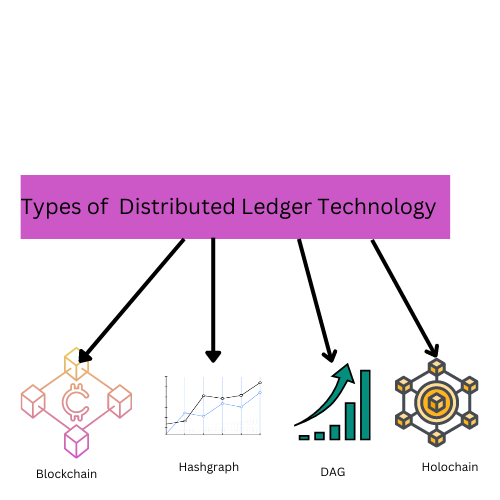When deciding to invest in blockchain technology and learn more about it, distributed ledger technology, or DTL, is one of the most crucial factors. The four most common varieties of distributed ledger technology and their decentralized strength are the subject of this article.
Distributed ledger technology: What is it?
A group of individuals using distributed ledger technology synchronize and share a database across many locations, businesses, or nations. Each network node's members have access to and may make identical copies of any records shared on the network. With the use of this technology, everyone can instantly see and reproduce any modifications.
Distributed ledger technology's importance
With the use of distributed ledger technology, the financial sector may become more reliable, effective, and resilient. The use of technology can enhance aspects of the financial industry such cross-border payments and transaction processing without the participation of a third party. Additionally, it can aid in bringing traditional financial services within the reach of the unbanked population, who is now excluded from them.
The distributed ledger technology may also be used to enhance existing procedures in a number of other industries, including manufacturing, sustainable energy, and government finance systems.
Transactions may be completed more quickly because distributed ledger technology does not require a centralized authority. Additionally, it can lower transaction costs.
Distributed ledger technology is thought to be a more secure approach to manage records since it holds the records at each network node, making it exceedingly difficult to manipulate or launch an effective assault. Distributed ledger technology offers a more open way of managing records since the data is shared and viewable across a network.
Distributed ledger technology, according to experts, may be used for tax collecting, voting procedures, transferring property titles, and social benefit distribution. Legal papers can also be processed and executed using it. The technology may be used by individuals to keep and control their personal information better and distribute specific pieces of information as necessary.
Types of Distributed Ledger Technology
Let's find out more about the top four distributed ledger technologies that professional investors suggest.
Blockchain
Blockchain is technically a sort of distributed ledger technology (DTL) that enables user transaction data to be organized as a chain of blocks and is known as the most popular DLT in the financial industry.
Consider it to be a lengthy discography. But not physical blocks; when we term “blockchain” we mean any form of digital data stored in a database.
These blocks are made up of digital data. It is well known that there are three main kinds of components in a blockchain. Consider a blockchain transaction as an illustration. Let's say that someone transacted. The dispatched action will also indicate the sender's time, date, and amount sent.
This section also contains information about the sender. The system will, however, substitute your distinctive "digital signature" for your genuine name in order to protect your anonymity.
Hashgraph
Hashgraph allows for the storing of numerous transactions with the same timestamp on the ledger. All transactions are simultaneously kept. In this example, each entry in the ledger is termed a “event”.
No node on the network may alter the data or transactions in this distributed ledger without the use of a blockchain. This means that nobody on the DLT system has the power to alter, delay, or stop any outstanding orders or affect how a transaction proceeds.
We can observe how miners select which transactions to include in a "block" when we contrast this to a blockchain. Your transactions and those of other users should be included in the validator nodes of the hashgraph in the same sequence as yours, ensuring that nobody is left out.
Directed Acyclic Graph (DAG)
Another ambitious member of the family of distributed ledgers that is not a blockchain is a DAG, or Guided Acyclic Graph. This well recognized distributed ledger technology, which was developed in opposition to the DLT blockchain, offers all the advantages of blockchain while also enhancing it. The ledger is a distinct option, although it is constructed quite differently. One of the key benefits of using a distributed ledger DAG is the availability of micro transactions for no cost. This is due to the network's increased scalability as it expands.
Holochain
The platform's transformation from a data-centric to an agent-centric approach has made it the pride of the next generation of digital ledger technology. Since Holochain-DLT does not employ a global consensus system, its scalability is almost limitless.
While Holochain is intended to decentralize communication between individual nodes, Blockchain is intended to decentralize network transactions. Each node in the network operates own chain, allowing them to function independently while remaining part of a larger network of thousands of other such nodes.
The future of technology revolves around the four most well-liked varieties of distributed ledger technology and its decentralized strength. I'm assuming you are familiar with each form of DLT and have some thoughts about it.
Final Words
One sort of distributed ledger technology is blockchain. There are several more, including Directed Acyclic Graph (DAG), Holochain DLT, and Holograph.
Distributed ledgers are a practical means to store data, disseminate data to several parties, and guard against data manipulation.
Both public and private distributed ledgers are available for data viewing and verification (restricted to a select few participants).





